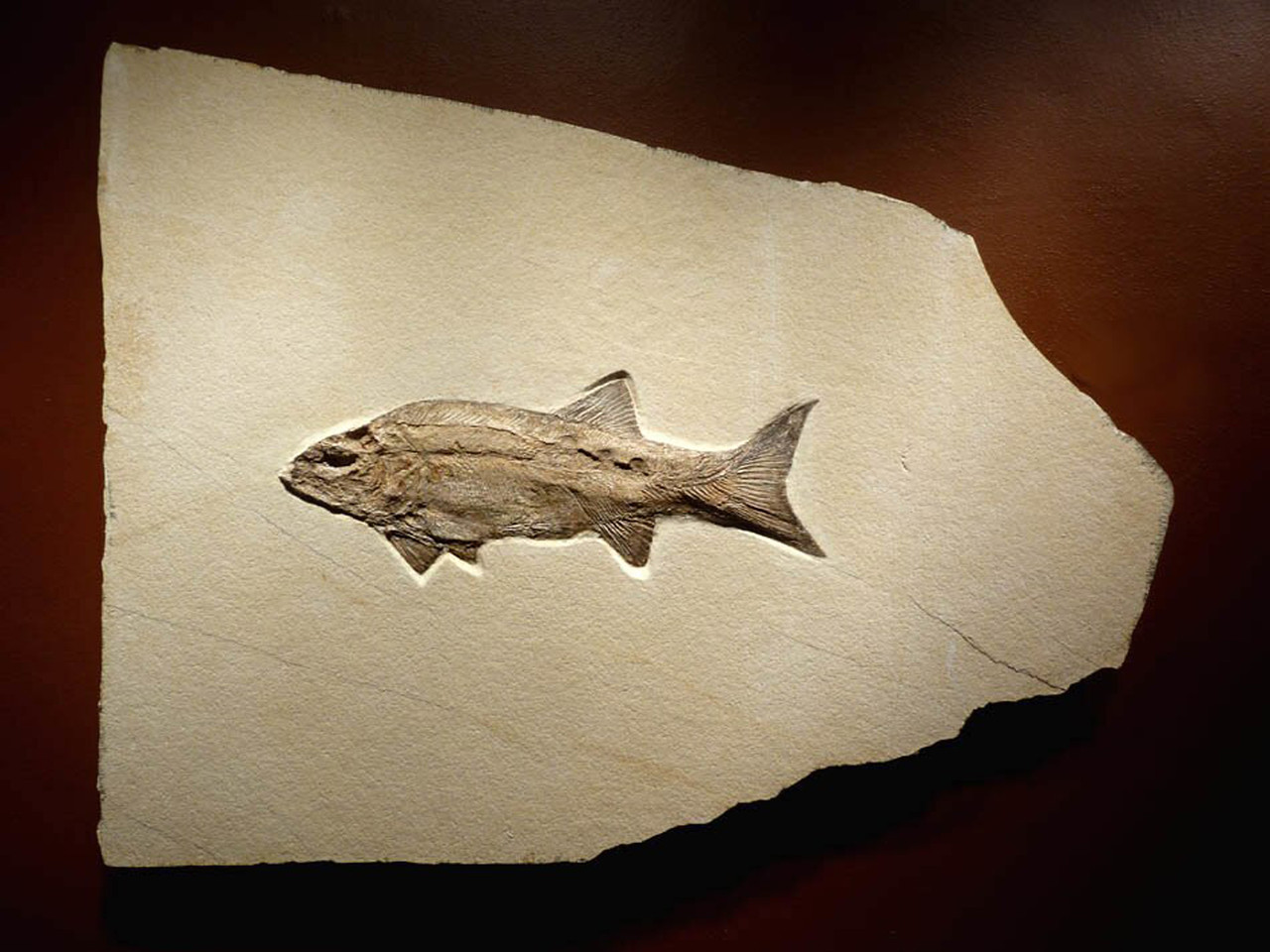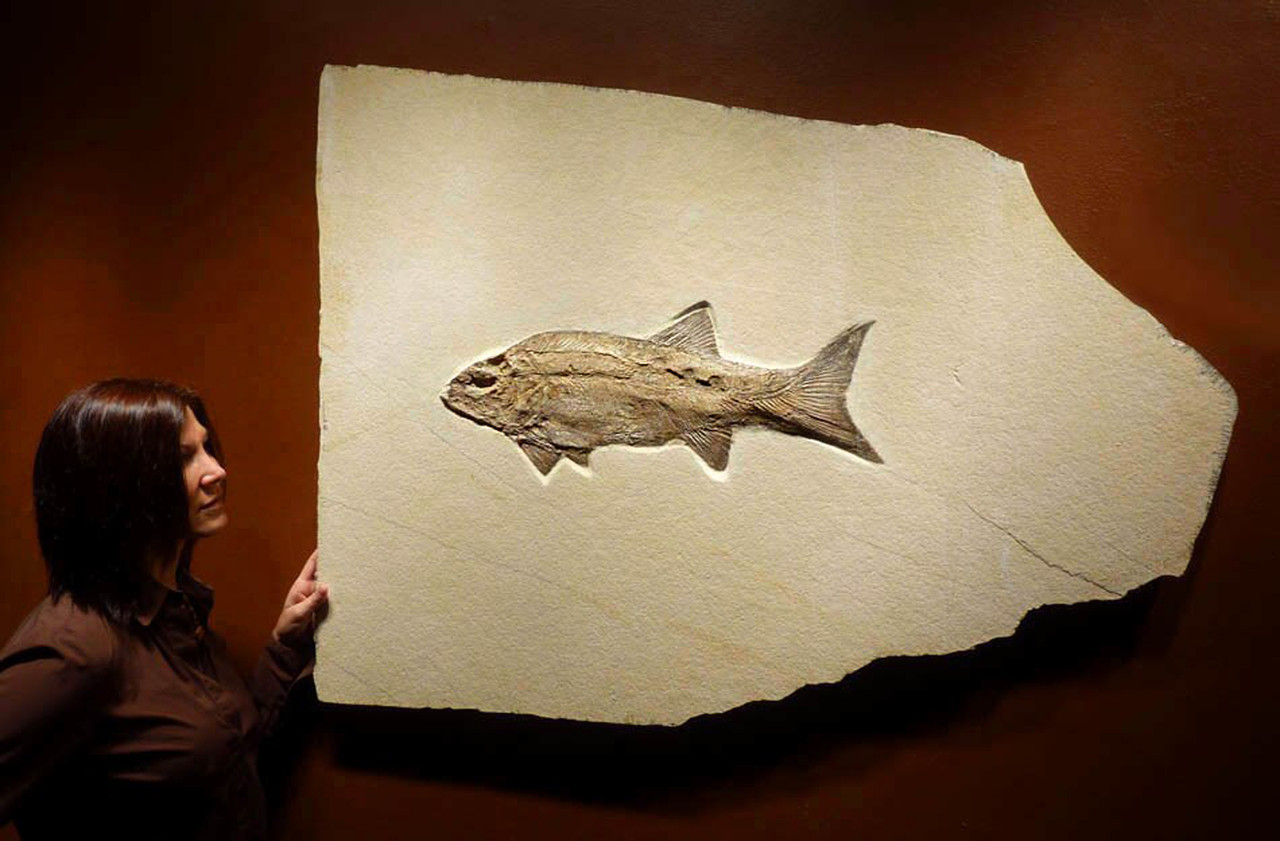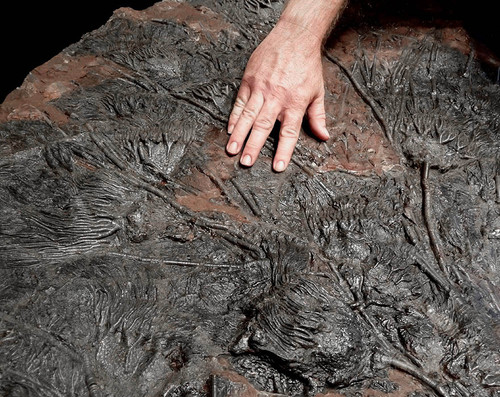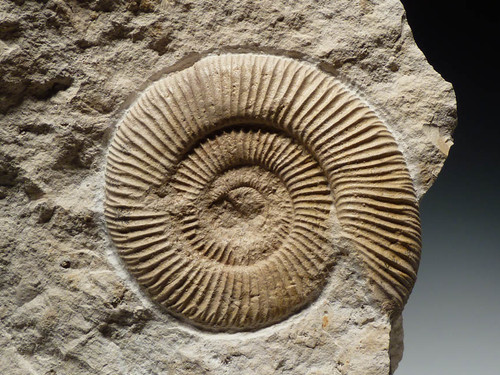Product Description
This is an extinct large Jurassic predatory fish called Callopterus sp.. Callopterus of any quality fossil, is a RARE discovery in the Solnhofen deposits. The few fossils we have seen are in public institutions and those examples are either poorly to moderately preserved, some severely deformed. This fish had stunning fins, most notably, a very large, fine caudal (tail) fin. In the few examples we know about, the caudal fin is not visible. This specimen offered here is not only in impeccable condition but the pose is perfect - straight with no deformation or twisting of the body. Most impressive is the perfectly spread and preserved large caudal fin as well as all the other fins! The anal, pectoral and dorsal fins are also spread and fully open which just makes this extraordinarily rare specimen even more beautiful and scarce. The concave depressions in a few places show fossil bone in them and are not a result of damage when the plate split, but evidence that the fish died and was buried and pressed against several clams in the same layer. The clams pressed into the body leaving a few areas of their three-dimensional form.
Not only will you not find a fossil Callopterus fish fossil of this quality anywhere, you will be hard-pressed to find one in any book or other resource - they are THAT RARE! This spectacular example is 100% COMPLETE possessing the FINEST POSSIBLE PRESERVATION AND DETAIL with all natural fin and body preservation - ZERO RESTORATION. For a better display, the fossil has been inset into a larger unbroken Solnhofen limestone plate but other than this, the detail you see is 100% AUTHENTIC. Every unique feature of the anatomy of this species can be seen. THE COLOR IS 100% NATURAL AND GENUINE. This fossil's detail can be attributed to the meticulous MANUAL HAND PREPARATION in the manner that museum fossils were prepared a hundred years ago.
The limestone slab is heavy with an approximate average thickness of .5". The entire reverse side has been reinforced with epoxy resin and fiberglass and a custom fabricated steel mounting brace has been attached to the back and allows this large slab to be safely hung on a wall that is structurally sound. Special crating and trucking fees will apply.
Of the utmost scarcity, this specimen is absolutely INCOMPARABLE to the enormous supply of fish fossils from the United States (Green River - Wyoming). The offer of this rare Jurassic fish fossil presents a truly once-in-a-lifetime chance for a museum, corporation or executive home to house and display a RARE AND UNCOMMONLY WELL-PRESERVED example of this SCARCE fish fossil. Some of the largest dinosaurs that ever walked the earth, as well as massive marine reptiles, were in existence when this fish swam in the ancient seas!
HISTORY
Callopterus first inhabited the ancient Jurassic seas 183 million years ago. This fish is a member of an extinct order of bony fishes called PHOLIDOPHORIFORMES. The family is OLIGOPLEURIDAE. With its large gape, large eyes and large fins, especially a large caudal fin, Callopterus was most likely a formidable hunter.
Famous for producing an astonishing diversity of rare and most intricately preserved fossils found anywhere in the world, the Jurassic lithographic limestone deposits of southern Germany are legendary. Quarries in the region are privately held and mostly worked by hand on a small scale. The finest grade fossils are few and far between and much rock must be split to locate them. The best fossils are most often kept by the quarry owners who themselves, are often collectors. Some quarries are operated on a large scale but these are now dug with machinery instead of manual labor. Because of this the rock is damaged and along with it, the rare fossils. What all this means today is that even fewer fine grade Solnhofen fossils are found and when they are, rarely do the best pieces make it to market. Occasionally, an old private collection surfaces and specimens are sold or traded. This is where the rare opportunity comes along to acquire a specimen on a level that truly is a prize find. Typically, the older material is often the best as it was collected when the deposits were first being worked and quality was in greater abundance.
 US DOLLAR
US DOLLAR
 EURO
EURO
 AUSTRALIAN DOLLAR
AUSTRALIAN DOLLAR
 CANADIAN DOLLAR
CANADIAN DOLLAR
 POUND STERLING
POUND STERLING
























